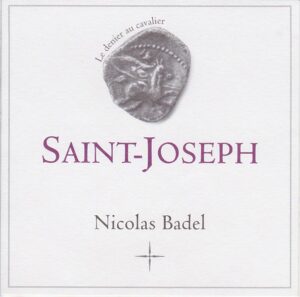Nicolas Badel
Saint-Joseph 2019
Nicolas Badel Saint-Joseph 2019
Hailing from the northern Rhône and a family of local farmers, Nicolas Badel is not one to rush anything; instead, he is a steadfast perfectionist who prefers to take his time and do things the right way. Nicolas’ wine-making is non-formulaic; he adapts it to the unique conditions of each vintage. The essence of his philosophy is to make terroir and finesse-driven wines that are pure, precise, clean, and transparent. The wines are well-structured yet also approachable and easy to drink. For this reason, he is now regarded in the same league with his friend Pierre Gonon.
His small winery is located near Vernosc-lès-Annonay, on the wild, forested plateau above the Cance valley, a tributary of the Rhône. Nicolas Badel’s farming has been certified organic since the very beginning and he is now in the process of carefully working biodynamics into his vineyards, with the intent of making the finest wines possible from his terroir. His labels feature a reproduction of the Roman coins from 75 BC that were found in the Intuition vineyard (along with other artifacts) during planting, evidence of the historic precedence of his vineyards.
Badel’s Saint-Joseph from his Montrond vineyard is a fresh, full, vibrant expression of syrah grown near the village of Limony, in the northern part of the appellation at 300m elevation, overlooking the Rhône River. Situated on a small ridge, the soils of this vineyard are made up of partially decomposed granite. The site is exposed to both north and south winds, the excellent ventilation lending to organic viticulture. Syrah vines here are around 25 years old. These factors combine to create a very fresh, fruit-forward expression of Saint-Joseph with all of the signature peppery dark fruit and drinkability one expects, with an unexpected extra refinement from his exceptional farming.
Vinification – After a manual harvest, the grapes are destemmed. The wine then ferments spontaneously with indigenous yeasts for 21 days in concrete tanks, with a gentle maceration, followed by ten months aging in three to five-year-old Burgundy barrels. No sulfur is added during the vinification process, only a small amount at bottling.


